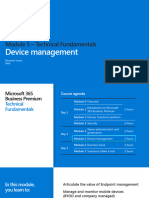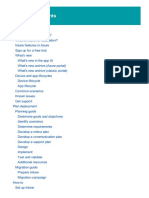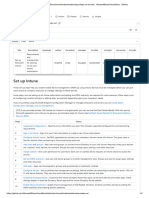0% found this document useful (0 votes)
37 views1 pageMicrosoft Intune Deployment Guide
This guide outlines the step-by-step process for deploying Microsoft Intune for enterprise device management, covering planning, configuration, app deployment, and monitoring. Key steps include defining management goals, configuring enrollment, creating device profiles, and ensuring compliance through monitoring. Best practices emphasize testing policies, reviewing compliance, and training users.
Uploaded by
dhawiCopyright
© © All Rights Reserved
We take content rights seriously. If you suspect this is your content, claim it here.
Available Formats
Download as DOCX, PDF, TXT or read online on Scribd
0% found this document useful (0 votes)
37 views1 pageMicrosoft Intune Deployment Guide
This guide outlines the step-by-step process for deploying Microsoft Intune for enterprise device management, covering planning, configuration, app deployment, and monitoring. Key steps include defining management goals, configuring enrollment, creating device profiles, and ensuring compliance through monitoring. Best practices emphasize testing policies, reviewing compliance, and training users.
Uploaded by
dhawiCopyright
© © All Rights Reserved
We take content rights seriously. If you suspect this is your content, claim it here.
Available Formats
Download as DOCX, PDF, TXT or read online on Scribd
/ 1






























































